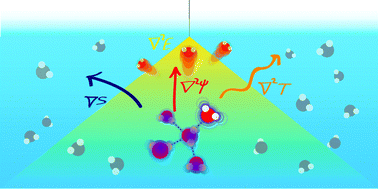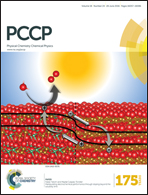Non-equilibrium thermodynamics and collective vibrational modes of liquid water in an inhomogeneous electric field
Abstract
In this experiment liquid water is subject to an inhomogeneous electric field (∇2Ea ≈ 1010 V m2) using a high voltage (20 kV) point-plane electrode system. Using interferometry it was found that the application of a strong electric field gradient to water generates local changes in the refractive index of the liquid, polarizes the surface and creates a downward moving electro-convective jet. A maximum temperature difference of 1 °C is measured in the immediate vicinity of the point electrode. Raman spectroscopy performed on water reveals an enhancement of the vibrational collective modes (3250 cm−1) as well as an increase in the local mode (3490 cm−1) energy. This bimodal enhancement indicates that the spectral changes are not due to temperature changes. The intense field gradient thus establishes an excited subpopulation of vibrational oscillators far from thermal equilibrium. Delocalization of the collective vibrational mode spatially expands this excited population beyond the microscale. Hindered rotational freedom due to electric field pinning of molecular dipoles retards the heat flow and generates a chemical potential gradient. These changes are responsible for the observed changes in the refractive index and temperature. It is demonstrated that polar liquids can thus support local non-equilibrium thermodynamic transient states critical to biochemical and environmental processes.



 Please wait while we load your content...
Please wait while we load your content...